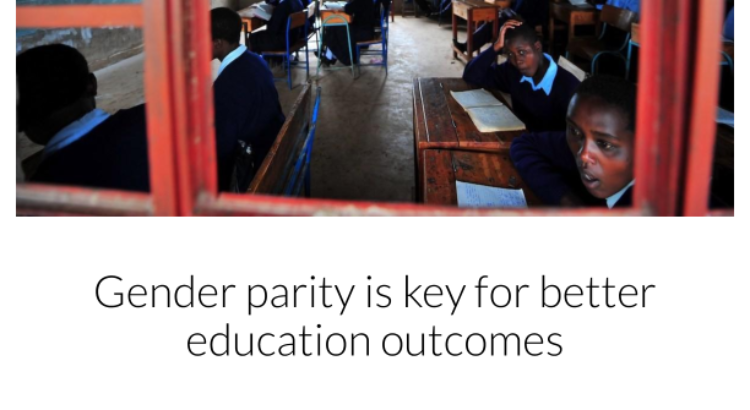África/ 18.06.2018/ By: Zachary Donnenfeld / From: allafrica.com.
Seventy years ago, the world agreed on the importance, and right of all people, to education. Article 26 of the Universal Declaration of Human Rights, adopted in 1948, states that ‘[e]veryone has the right to education’, and that elementary education shall be compulsory and free.
Yet according to the most recent data, we are far from achieving universal access to free, compulsory education – even at primary (or elementary) level. In 2015, the average person in high-income countries had nearly 12 years of education, against fewer than five years in low-income countries.
The number of average years of education is an important measure of the overall level of education in a population and is strongly correlated with more productive economic activity.
Globally, the discrepancy in levels of educational attainment remains large. Figure 1 demonstrates this inequality by showing the average years of education in the adult population for select regions over a 40-year period.
People in Europe and Central Asia have historically had much higher levels of education than those in other regions, though the gap has begun to shrink over time. That said, some regions are catching up faster than others. Sub-Saharan Africa has been particularly slow to progress in terms of educational attainment. At fewer than six years of education per adult in 2015, the region has yet to attain the minimum standard envisioned by the United Nations 70 years ago.
A common way to measure equality of access to education by sex is ‘gender parity’. This method measures the number of female students participating in a given level of education (for example primary or secondary school) relative to the number of male students at that same level.
Figure 2 shows gender parity in primary enrolment for the same regions as Figure 1 (excluding Europe and Central Asia). It highlights the relative exclusion of females from educational opportunities in sub-Saharan Africa, compared to other regions.
Gender parity in sub-Saharan Africa has improved – from about 80 female pupils enrolled for every 100 male students in 1980 to about 95 females per 100 male students in 2015. By comparison however, the Middle East and North Africa (MENA), and East Asia and Pacific, have moved much quicker towards gender equality. One way of interpreting Figure 2 is that in 2015, five out of every 100 girls in sub-Saharan Africa were not expected to set foot in a primary school classroom.
Between 1980 and 1995, sub-Saharan Africa experienced a modest increase (about 8%) in gender equality in primary enrolment. By contrast, women in MENA countries became about 20% more likely to enrol in primary school over that same period. Sub-Saharan Africa remains stuck, with higher levels of gender inequality in primary enrolment than any other region. This is reflected in a population that remains less educated than those in other developing regions.
The ability of MENA countries to make their education systems more gender-inclusive supported the expansion of educational attainment in that region. While MENA is not typically thought of as a particularly progressive region regarding gender, in 2015, women in MENA countries were about 5% more likely to enrol in primary school than women in sub-Saharan Africa.
The exclusion of women and girls from educational opportunities in sub-Saharan Africa is one of the factors contributing to the region’s struggle to improve overall educational attainment levels. Conversely, improvements in MENA between 1980 and 2000 in both primary and secondary enrolment (not shown here) supported the region’s significantly faster increase in average education years relative to sub-Saharan Africa, demonstrated in Figure 1.
Education is inherently valuable for a number of reasons. A better educated population offers wider social benefits, like improved health outcomes (for example a lower propensity to smoke), increased levels of civic participation and reduced fertility rates. Better educated parents tend to have fewer children, which can help reduce the pressure on governments in Africa to deliver basic services by shrinking the absolute size of the population.
In other words, there are strong knock-on effects from educating women and girls. Other research suggests that educating women and girls can play a role in poverty reduction, and even in post-conflict reconstruction by including conflict-resilience education within existing curricula.
If Africa hopes to close the gap in economic and human development outcomes between itself and the rest of the world, then improving the average levels of education of women and girls is fundamental.
Historically, it has taken decades for countries to improve the average levels of education and to achieve gender parity between women and men. Technology may be accelerating those timelines, according to a recent United Nations Children’s Fund report. But that report also points out that access to technology may exacerbate (or maintain) existing levels of discrimination against women.
Whether or not the digital revolution changes the nature of education for women and girls, improving the overall level of education in Africa is paramount to promoting more rapid economic growth and improving livelihoods. Ensuring that 100% of Africa’s citizens can enrol in primary school, regardless of their sex, should be the first step towards achieving that brighter future.
From: http://allafrica.com/stories/201806150191.html







 Users Today : 19
Users Today : 19 Total Users : 35460402
Total Users : 35460402 Views Today : 39
Views Today : 39 Total views : 3419202
Total views : 3419202